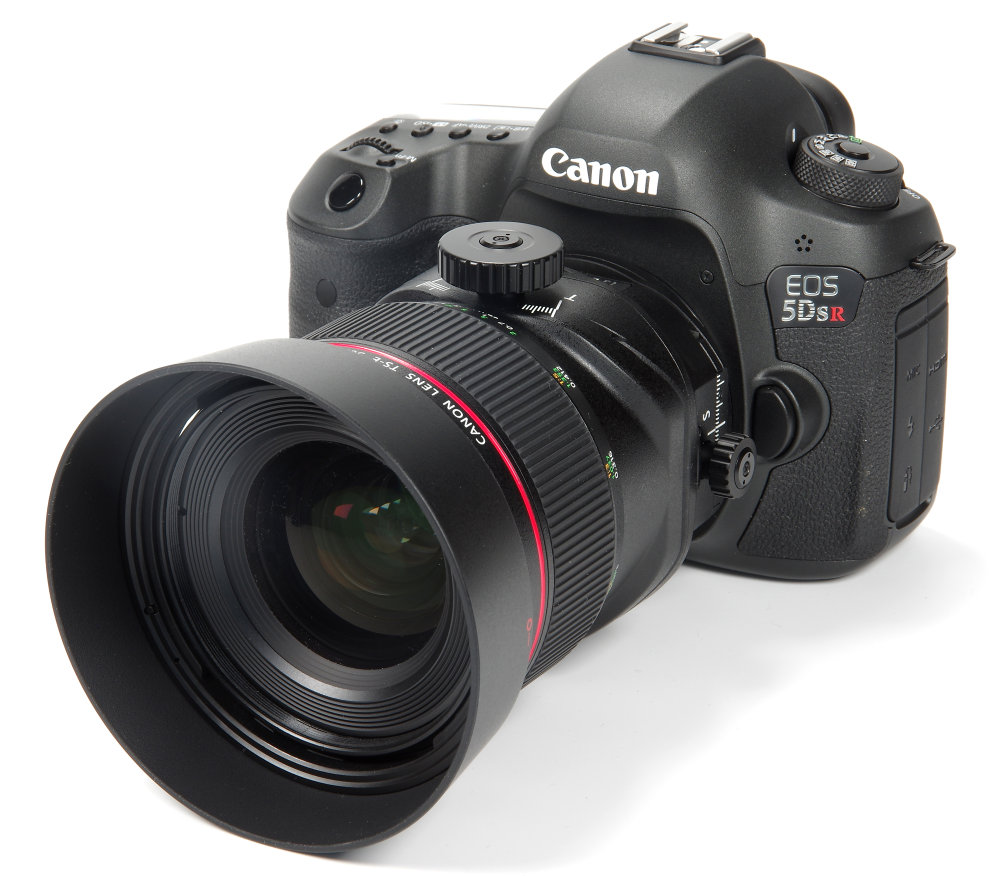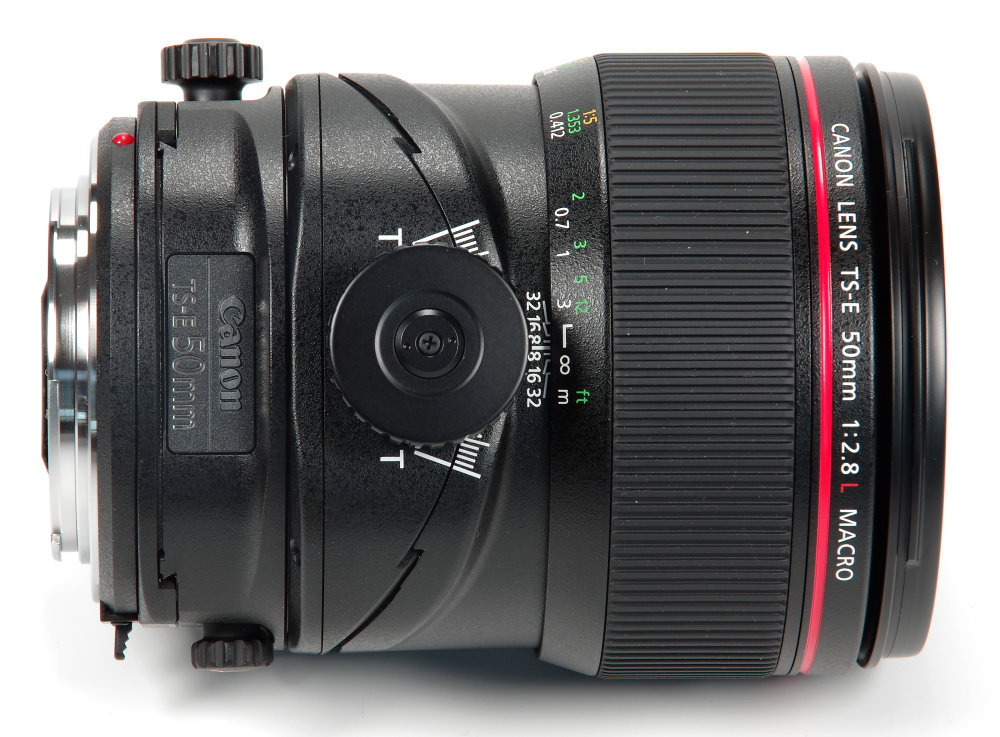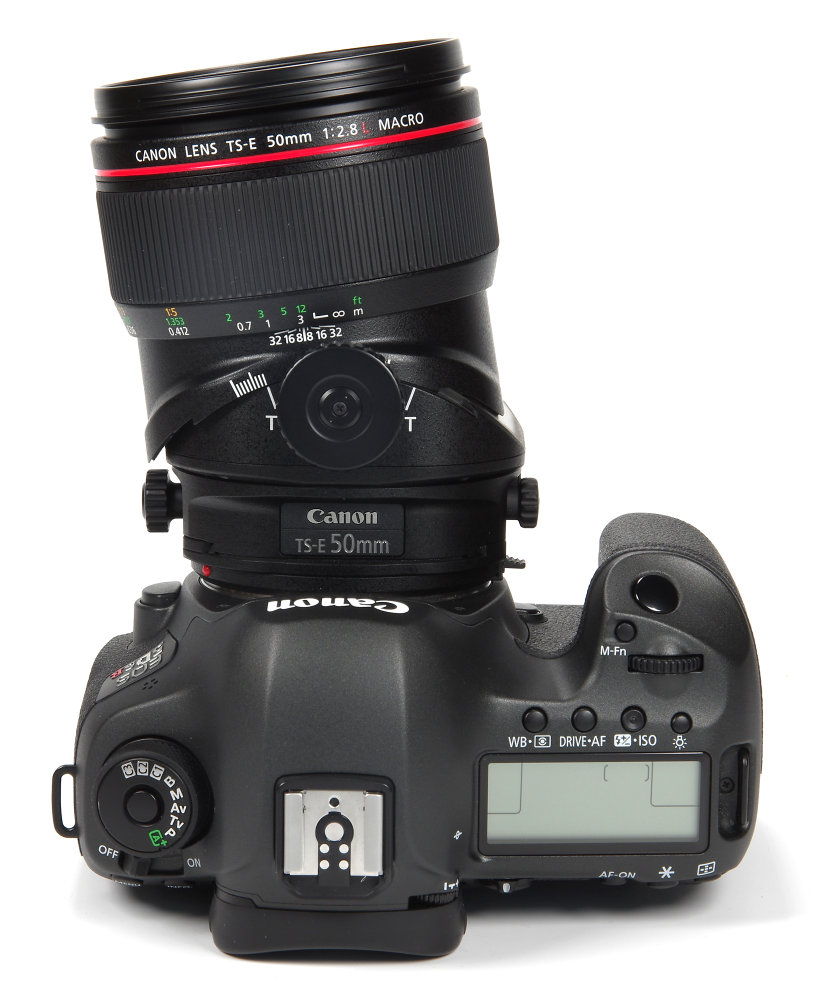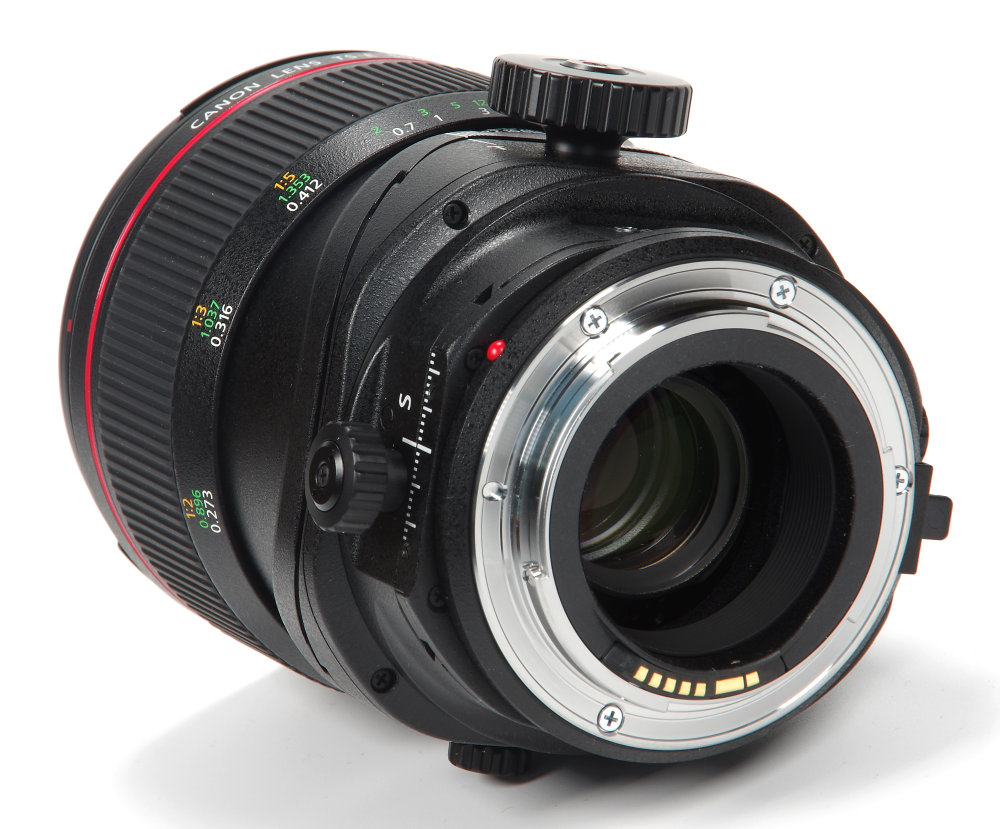Canon TS-E 50mm f/2.8L Macro Review
Canon TS-E 50mm f/2.8L Macro Handling and Features
Taking our tour of the lens from the front, a wide, round lens hood bayonets cleanly into place. It is retained by a locking catch which holds the hood securely in place. There is a standard filter thread taking 77mm filters. The lens does not rotate during focusing, so the use of polarising filters is facilitated.
Behind this is the well ribbed, rubberised manual focusing ring, and the lens is, in fact, manual focus only. The action is silky smooth though and the image snaps in and out of focus easily, especially when using a magnified live view. The distance scale is marked in feet and metres, although the figures are very small and some may have difficulty deciphering them. Focusing is down to 27.5cm, or 12.5cm from the front of the lens, which represents a maximum magnification of 1:2 or 0.5x. This is also termed half life-size, and is quite an exciting bonus for a tilt and shift lens.
For those who need a closer focus, extension tube EF12 II enables a magnification of 0.74x – 0.23x. Closer still, extension tube EF25 II gives a magnification range of 1.0x – 0.48x. These tubes are of course optional extras.
Moving closer to the camera body, we find the tilt mechanism. This is controlled by a large knob on the top of the lens, where we also see clear markers indicating the degree of tilt. The underside of the lens has the locking mechanism so that the tilt is not accidentally engaged. Tilt is available over a range of plus or minus 8.5 degrees.
Next is the shift control, which is found on the side of the lens. On the right is the actual control and indicator scale and on the left the locking mechanism. The action of both tilt and shift is very smooth, giving a very reassuring feel that exudes a sense of quality and precision. The lens can be shifted plus or minus 12mm.
Lens construction is 12 elements in 9 groups. The lens diaphragm comprises 9 blades, although there is no control of this on the lens. Aperture settings are controlled by the camera. The latest Canon Subwavelength Structure and Air Sphere coatings are employed.
For a 50mm f/2.8 lens, this all results in a very hefty 945g package, although it does balance very well with the Canon EOS 5DS R used for this review. For use of the tilt-shift mechanisms, it is quite likely that a tripod will be best, and as the lens has manual focus only that also means that focus can be very accurately set. Despite quite a short throw of the focusing ring, finding a precise point of focus is very easy.
Obvious applications are of course architecture and the correction of converging verticals, but equally well everything from landscape to portraiture can benefit. Wider apertures can be used whilst matching the plane of focus to the subject and really the only limitation is our own creative imagination. Being able to apply these movements to macro photography is a very powerful bonus, full of its own possibilities.
Add your message
Please login here or if you've not registered, you can register here. Registering is safe, quick and free.
photodo Stats
428 MTF tests
74 in-depth photodo reviews
100+ users join each day
Help the lens community by reviewing or rating a lens today via our lens search
Latest Lens Reviews
- Chinon 28mm f/2.8 Vintage Lens Review
- Canon EF 70-200mm f/4L IS II USM Lens Review
- Samyang AF 85mm f/1.4 EF Review
- Sigma 70mm f/2.8 DG Macro Art Review
- Samyang AF 24mm f/2.8 FE Review
- Meike 50mm f/1.7 Review
- Tamron 70-210mm f/4 Di VC USD Review
- Lensbaby Burnside 35mm f/2.8 Review
- Asahi Super Takumar 50mm f/1.4 Review
- Asahi Super-Multi-Coated Takumar 135mm f/3.5 Review




